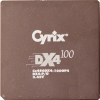

Retro computing enthusiast.
Avatar taken from: https://en.wikipedia.org/wiki/Cyrix_Cx486#/media/File:Cyrix_Cx486DX4.jpg
This profile is from a federated server and may be incomplete. View on remote instance

Retro computing enthusiast.
Avatar taken from: https://en.wikipedia.org/wiki/Cyrix_Cx486#/media/File:Cyrix_Cx486DX4.jpg
This profile is from a federated server and may be incomplete. View on remote instance
Microsoft releases MS-DOS 4 source code on GitHub — 45 year old code now open-source ( www.tomshardware.com )
Downsides of Signal alternatives compared to Signal?
I'm thinking of the things listed on the Privacy Guides real-time communication section...
N100 Mini PC w/ 3xNVMe?
Not sure why this doesn't exist. I don't need 12TB of storage. When I had a Google account I never even crossed 15GB. 1TB should be plenty for myself and my family. I want to use NVMe since it is quieter and smaller. 2230 drives would be ideal. But I want 1 boot drive and 2 x storage drives in RAID. I guess I could potentially...
Real gaming router ( kittenlabs.de )
https://kittenlabs.de/real-gaming-router/...
Benefits of running 2 Wi-Fi networks from the same router? What are the downsides? (I don't know if there is a better community for this question)
I am worried that there is not really a benefit of doing that, just more noise and energy consumption.
Self Hosting Fail
I woke up this morning to a text from my ISP, "There is an outage in your area, we are working to resolve the issue"...
Question about using default router and modem
Is using the router and modem my cable company provided for my internet putting my privacy at risk? And if so, I have heard of openWRT routers but it seems like there's quite a bit of a learning curve with that but even if I got one would I need a non cable company branded modem as well? Any specifically that anyone here would...
Open hardware single board computer server recommendations?
Hi, I am looking for a SBC to self host stuff on. I would like it to be somewhat open hardware (manufacturer provides schematics and drivers are open source). Which is why I initially wanted to buy a banana-pi router but after reading a post in this /c/ I found that mainline linux support is fairly rare in these arm/riscv SBCs....
Any feedback from port knockers ? ( en.m.wikipedia.org )
To mitigate the effort to maintain my personal server, I am considering to only expose ssh port to the outside and use its socks proxy to reach other services. is Portknocking enough to reduce surface of attack to the minimum?
Raspberry Pi Streaming box
I want to use my raspberry pi as a “streaming stick” connected to my tv to stream my Jellyfin library and self hosted invidious instance (not hosted on the pi). Any top recommendations on the right setup? I was considering LibreElec, but was wondering if there are any other more modern solutions.
Another good reason not to open port 22 ( lemmy.world )
In the past two weeks I set up a new VPS, and I run a small experiment. I share the results for those who are curious....
Best router for home use?
I am planning to eventually build my own home server, and when I do I will hook it up via ethernet. But I do want to switch away from the generic FIOS router and use my own for more control over my data and security. Any recommendations?
what is everyone using for photos?
Looking for an alternative to synology photos. I moved over to synology about 3 years ago and am now considering moving out of the synology ecosystem. I’m looking for something that has a decent android app, wifi syncing, shareable albums, all the standard stuff....
Are those Pico PSUs worth it?
I have an HP g3 mini and a Dell Optiplex flying around, both similarly specced. The HP has an i5 6500t and 16gb DDR4 RAM, the Dell has 8gb DDR3l, so nothing too different....
How do you handle secrets in home automation?
Say you have a script or something that gets run in cron/task scheduler and it needs a password… say to ssh to a raspberry pi elsewhere in your house....
What router do you recommend for openwrt?
I don’t know if this is relevant, but it has to connect to the internet using the phone line...
How much power does your home lab take?
Mine runs at 30watts at idle....
BirdNET-Pi: A realtime acoustic bird classification system for the Raspberry Pi 4B, 3B+, and 0W2 built on the TFLite version of BirdNET. ( github.com )
Not the most conventional application for self-hosting, but thought it might make for a fun weekend project for someone....
[Question] How do you handle offsite backups for your setup?
I’m particularly interested in low bandwidth solutions. My connection to the internet is pretty rough 20mbps down and 1mbps up with no option to upgrade....
Self hosting lemmy: does it support subpath URLs?
Hi! I want to self host lemmy on my homelab. I have a lot of services installed but only a couple of them are exposed on the internet using subpaths like host.com/plex or host.com/nextcloud....